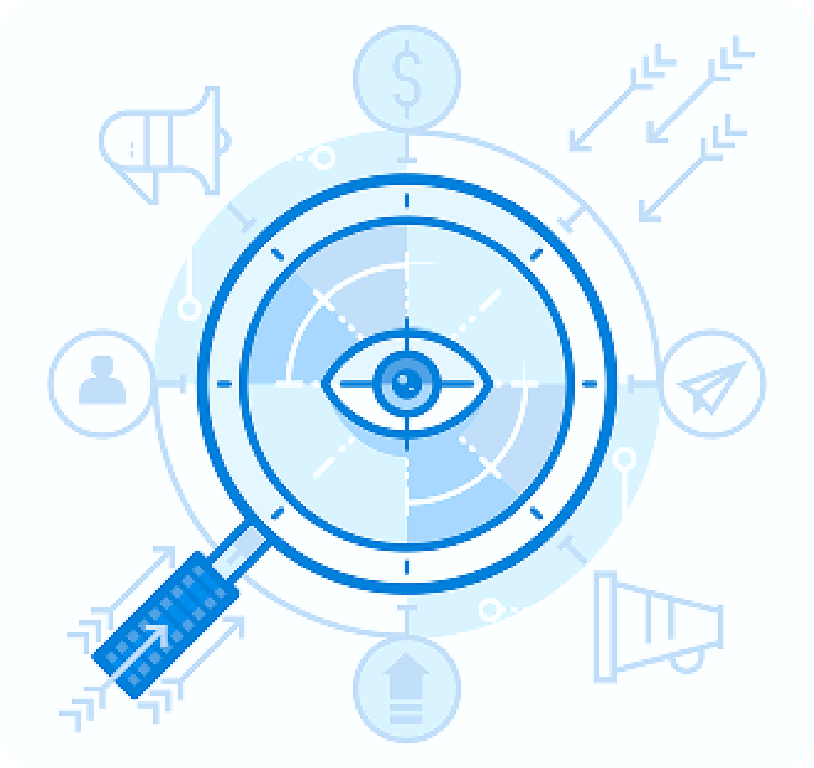What if a single platform could spot hidden threats fast and guide clear action before an incident grows?
We present a unified offering that aligns technology, people, and processes to protect hybrid cloud and on-prem environments. Our approach uses real-time analysis of traffic and activity to surface early indicators of compromise.

By combining behavioral analytics, machine learning, and human expertise, we shorten dwell time and reduce risk. This service complements SIEM logs and endpoint tools by filling visibility gaps with agentless telemetry.
We operate as a trusted cybersecurity partner with a scalable platform that integrates with existing stacks. Our outcome-driven model prioritizes alerts, automates protective action, and guides remediation to speed recovery.
Key Takeaways
- Comprehensive coverage: Evidence-rich detections across traffic and activity.
- Faster action: Prioritized alerts reduce mean time to respond.
- Seamless integration: Works with SIEM, EDR, and SOAR investments.
- Scalable platform: Tailored for U.S. organizations and compliance needs.
- Continuous refinement: Detection logic updates to track evolving threats.
Proactive protection for U.S. organizations with managed network detection and response
Today’s hybrid architectures push vast volumes of traffic across dispersed systems, creating blind spots for many teams.
We focus on continuous telemetry to restore enterprise-wide visibility. Sensors collect metadata from on‑prem and cloud segments so gaps where agents are absent (IoT, unmanaged assets) are no longer invisible.
Why NDR now: expanding attack surfaces across hybrid and cloud environments
As networks grow, adversaries hide in routine traffic. Our solution applies analytics and data science to separate benign spikes from malicious behavior.
Outcomes we deliver: faster detection, prioritized alerts, and reduced MTTR
High‑fidelity alerts are ranked by severity and context to speed triage. We provide a single source of network evidence to simplify investigations and disclosure.
- Coverage: North‑south and east‑west traffic monitored in real time across cloud and on‑prem segments.
- Operational benefits: Faster time to detect and shorter time to resolve, lowering impact and recovery cost.
- Augmenting teams: 24/7 surge capacity and subject matter expertise to support internal staff.
What is Network Detection and Response and how it works
Passive telemetry turns packet signals into a continuous, searchable record of traffic that powers faster, evidence-rich action.
We deploy sensors (virtual, physical, or cloud-native) via SPAN/TAP to ingest packet-derived metadata in real time. That raw data forms the foundation for high-confidence network detection response.

Continuous network telemetry: sensors, metadata, and real-time analytics
Sensors capture flow and packet metadata without impacting performance. The pipeline normalizes that data and streams it into analytics for immediate review.
Behavioral analytics and machine learning to baseline normal network behavior
We apply behavioral models and machine learning to build a unique baseline for your environment. Deviations from the normal network profile are flagged as anomalies for analyst inspection.
Analyzing north-south and east-west traffic, including encrypted traffic visibility
Both north-south flows and east-west communications are examined to surface command-and-control, lateral movement, and data staging. Encrypted traffic is profiled by metadata and flow characteristics—no decryption required—preserving privacy while exposing cloaked threats.
From detection to investigation: forensics, context, and historical activity
Alerts are enriched with entity context, historical network activity, and path analysis. This lets us attribute suspicious behavior to specific hosts or subnets and map lateral movement for fast containment.
- Low operational impact: passive monitoring preserves availability.
- Adaptive models: behavioral analytics reduce reliance on signatures.
- Clear outcomes: better detection, faster decisions, and forensic visibility grounded in network data.
Key capabilities that strengthen your security posture
We deliver clear, enterprise-wide visibility that links devices, users, and traffic to specific events. That view helps teams find where threats start and how they spread across segments.
Contextual, enterprise-wide visibility across devices, users, and network activity
Contextual visibility ties hosts, identities, and flow metadata to events. This reveals lateral movement and shows which devices drive suspicious activity.
High-fidelity threat detection and alert prioritization that reduces false positives
We apply behavioral models, machine learning, and threat intelligence to produce fewer, actionable alerts. Teams spend less time on noise and more on meaningful incidents.
Threat hunting and incident handling enhanced by evidence-rich analytics
Proactive threat hunting uses flow records, timelines, and correlated history. Analysts trace beaconing, port misuse, and lateral traversal with precise network evidence.
Response capabilities: automated actions and manual workflows for containment
Automated actions (for example, terminating risky sessions) work alongside guided manual playbooks. This combination speeds containment while reducing false positives.
| Capability | Primary benefit | Example action |
|---|---|---|
| Enterprise visibility | Faster attribution | Map affected devices and users |
| High-fidelity alerts | Lower false positives | Prioritize triage by business impact |
| Automated containment | Shorter exposure windows | Terminate suspicious connections |
Our managed NDR service model and response workflows
We run a dedicated operations center that turns raw flow data into clear, prioritized action. Our model blends continuous monitoring with automated playbooks and expert-led investigations to shorten mean time to remediate.
24/7 SOC monitoring with real-time alerts and prioritized triage
We operate a 24/7 SOC that monitors telemetry, raises prioritized alerts, and routes issues by severity and business impact. This triage aligns escalation paths so teams act at the right time.
Automated playbooks to terminate suspicious connections and disrupt attacks
Playbooks execute fast protective actions—such as terminating risky connections or isolating segments—while preserving human oversight. We integrate with SOAR and existing tools to keep an auditable trail.
Human-led investigations, lateral mapping, and containment guidance
Human analysts trace lateral movement, correlate events, and assemble a clear incident narrative (who, what, where, when, how). That context fuels efficient incident response and threat hunting.
| Capability | Primary benefit | Metric |
|---|---|---|
| 24/7 SOC | Continuous coverage | MTTD / MTTR |
| Automated playbooks | Faster containment | Time to isolate |
| Forensic enrichment | Clear investigation | Validation time |
Integrations that amplify your security investments
Bridging telemetry sources gives teams a unified view that simplifies investigation and reduces uncertainty.
NDR + SIEM: closing log gaps with network truth
We integrate ndr solutions with SIEM to close logging gaps and correlate alerts with concrete traffic evidence. That creates a single source of truth for investigations and compliance.
NDR + EDR: agentless insight to complement endpoints
Our ndr solution adds agentless visibility that captures unmanaged devices, OT/IoT, and cloud workloads. Analysts pivot from endpoint logs to packet‑level context without extra instrumentation.
NDR + SOAR: orchestration for faster, consistent action
We link with SOAR and other security tools so playbooks execute quickly and repeatably. This reduces manual toil and shortens incident response time.
Cloud environments: unified visibility across public, private, and hybrid
Sensors run passively (SPAN/TAP), preserving performance while extending coverage across cloud environments. We enrich cases with threat intelligence and encrypted traffic analytics at the metadata level.
- Platform dashboards: cross‑tool metrics that show improvement over time.
- Tailored integrations: aligned with change controls and governance.
Deployment options built for modern networks
Flexible delivery lets teams add passive visibility with minimal disruption. We provide SaaS, virtual appliances, plus hardware when needed to match operational preferences.

SaaS and virtual appliances with passive monitoring via SPAN/TAP
Our SaaS model speeds time-to-value while virtual appliances suit air-gapped or regulated installations. Sensors sit off SPAN/TAP ports to observe traffic without touching production paths.
Scalable coverage for IT/OT/IoT devices without performance impact
We extend coverage across data centers, campuses, remote sites, and cloud workloads. This preserves application performance while collecting the telemetry analysts need.
Deployment follows validated runbooks, pre‑go-live testing for north-south and east-west paths, plus health monitoring for sensors and pipelines. We integrate with change controls and existing tools to keep rollouts secure and auditable.
- Scale: add capacity or segments without redesign.
- Agentless reach: visibility for IT, OT, IoT devices that lack endpoints.
- Cloud-friendly: connectors and mirroring aligned to each provider’s best practices.
| Deployment Mode | Primary Benefit | Typical Use Case |
|---|---|---|
| SaaS | Rapid provisioning, simplified lifecycle | Distributed teams seeking quick time-to-value |
| Virtual appliance | Control within private estates | Regulated sites, private cloud |
| Hardware sensor | High-throughput capture fidelity | Core data centers, segmented industrial sites |
How NDR compares to EDR, MDR, and XDR
A layered security strategy uses complementary telemetry to shorten investigation time and lower risk. We explain how each approach contributes to visibility, detection, and fast action.
NDR vs EDR: NDR inspects network traffic and activity to expose lateral movement, covert command channels, and data exfiltration that device agents may miss. EDR supplies deep endpoint telemetry and device-level forensics for containment and cleanup. Together they give teams both broad visibility and precise control.
NDR vs MDR: MDR overlays technology with expert analysts providing 24/7 coverage and workflows. NDR often serves as a core input to MDR programs, expanding coverage to unmanaged devices and cloud workloads where agents cannot run.
NDR within XDR: XDR unifies telemetry from EDR, NDR, SIEM, and cloud sources into a single platform for correlated detection and coordinated action. Adding NDR to an XDR platform improves cross-domain visibility and reduces duplicate alerts.
| Capability | Primary strength | When to choose |
|---|---|---|
| NDR | Traffic-level visibility; agentless coverage | Detect lateral movement, C2, unmanaged assets |
| EDR | Device telemetry and isolation | Forensic detail and endpoint containment |
| MDR | Analyst-led 24/7 monitoring | Teams needing continuous oversight and escalation |
| XDR | Unified platform and automated playbooks | Organizations seeking centralized case management |
Guidance: Use EDR for device control, NDR for traffic-layer insight, MDR for round-the-clock analyst support, and XDR to centralize tools. This alignment of people, process, and platform makes detection faster, reduces incident churn, and strengthens security posture.
Conclusion
We turn continuous telemetry into clear, actionable visibility that helps teams spot subtle threats in cloud and on‑prem environments. This visibility links network traffic to user behavior so threat detection has context and meaning.
Our model shortens time to decision by mixing automation with expert-led investigation. That improves incident response while lowering operational costs for security teams.
Historical data, correlated analytics, and metadata profiling speed forensic work and support compliance. Coverage extends across north‑south and east‑west paths, encrypted channels, and agentless devices in IoT/OT and cloud.
Align with a partner that delivers measurable risk reduction through proven ndr solutions. We help organizations reduce MTTR, prioritize alerts, and build lasting resilience.
FAQ
What does “Expert Managed Network Detection and Response Solutions” mean for our organization?
We provide a comprehensive platform and service that continuously monitors traffic, applies behavioral analytics and machine learning, and delivers prioritized alerts and guided containment. Our approach gives security teams evidence-rich context and faster time to remediation so you can reduce risk across on-premises, cloud, and hybrid environments.
Why invest in NDR now given expanding hybrid and cloud environments?
Attack surfaces have grown with remote users, cloud apps, and operational technology. NDR gives visibility into east-west and north-south traffic, including encrypted flows, so you can detect lateral movement and cloud-native threats that may bypass endpoint-only controls.
What outcomes should we expect from a deployed solution?
Expect faster detection, fewer false positives, prioritized alerts, and reduced mean time to respond (MTTR). We also deliver threat hunting capabilities and forensic context to improve incident response and ongoing risk reduction.
How does NDR collect and analyze telemetry?
Sensors capture metadata and flow records from SPAN/TAP ports, cloud APIs, and virtual appliances. Real-time analytics and machine learning baseline normal behavior and flag deviations for investigation and response.
How do behavioral analytics and machine learning improve detection?
These technologies model typical device and user behavior to spot anomalies such as unusual data transfers, new protocols, or abnormal access patterns. That reduces noise and highlights high-confidence threats for analysts.
Can the solution inspect encrypted traffic?
Yes. We use metadata analysis, flow characteristics, and selective decryption integrations where permitted to surface suspicious encrypted sessions while maintaining privacy and performance.
What forensic capabilities are provided after detection?
Investigations include historical activity logs, session reconstruction, lateral movement mapping, and evidence export for incident response. This context supports rapid containment and post-incident review.
What key capabilities strengthen our security posture?
The platform offers enterprise-wide visibility across devices and users, high-fidelity detections with alert prioritization, threat hunting tools, and response options ranging from automated playbooks to manual workflows guided by analysts.
How does your service handle response and containment?
We provide automated actions to terminate suspicious connections and block indicators, plus human-led investigations for complex incidents. Playbooks and runbooks ensure consistent containment and remediation across environments.
What does 24/7 SOC monitoring include?
Our security operations center provides continuous monitoring, real-time alerting, prioritized triage, and escalation. Analysts combine platform telemetry with threat intelligence to validate incidents and recommend next steps.
How do automated playbooks work in practice?
Playbooks codify response steps—such as isolating hosts, blocking IPs, or disabling accounts—so actions execute quickly and consistently. Teams can tune automation thresholds and require analyst approval for high-impact steps.
How do you balance automation with human investigation?
Automation handles routine containment to reduce dwell time, while human analysts focus on complex threats, lateral movement mapping, and root-cause analysis. This hybrid model preserves speed without losing judgment.
How does NDR integrate with existing security tools like SIEM and EDR?
NDR enriches SIEM with network truth and correlated detections, complements EDR by providing agentless visibility, and feeds SOAR for orchestrated response. These integrations close telemetry gaps and speed investigations.
Will NDR work across public and private cloud environments?
Yes. We deliver unified visibility across public cloud, private cloud, and hybrid deployments using virtual sensors, cloud-native APIs, and centralized analytics to detect threats across environments.
What deployment options are available?
Deployments include SaaS, virtual appliances, and passive monitoring via SPAN/TAP. We scale coverage for IT, OT, and IoT devices without impacting performance.
How does this solution compare to endpoint detection tools?
Endpoint tools focus on host-level telemetry, while our platform observes traffic and network behavior. The two are complementary—network insight can reveal threats that bypass or disable endpoints.
Where does NDR fit alongside MDR and XDR programs?
NDR can be a core component of MDR programs by adding network-level detections and response. Within an XDR strategy, NDR contributes network telemetry to create unified detection across endpoints, network, and cloud.
How does NDR help with threat hunting?
Analysts use historical network telemetry, behavioral baselines, and threat intelligence to proactively search for hidden adversaries. Evidence-rich analytics make hunting efficient and actionable.
What kind of visibility will we gain across devices and users?
You get contextual, enterprise-wide visibility that links devices, users, applications, and traffic flows. That context helps prioritize alerts and accelerates investigations.
How do you prioritize alerts to reduce false positives?
The platform combines behavioral risk scoring, asset criticality, and threat intelligence to surface high-confidence alerts. This reduces analyst fatigue and focuses resources on real threats.






